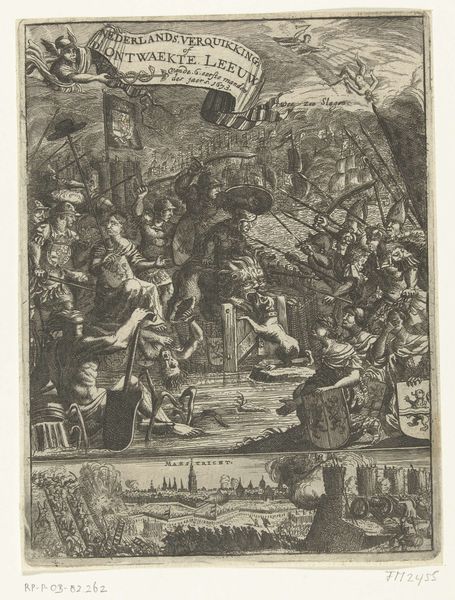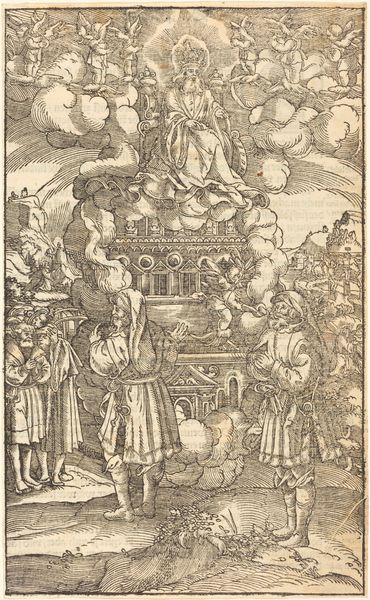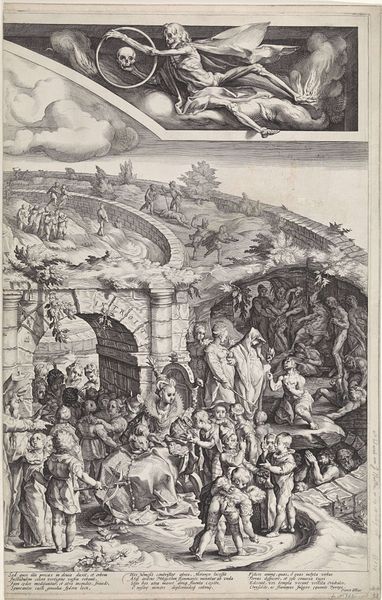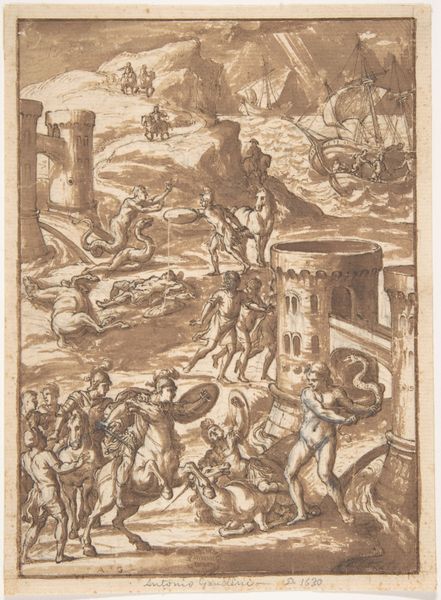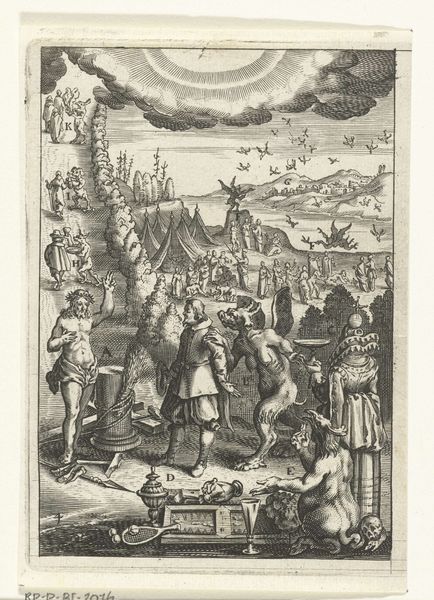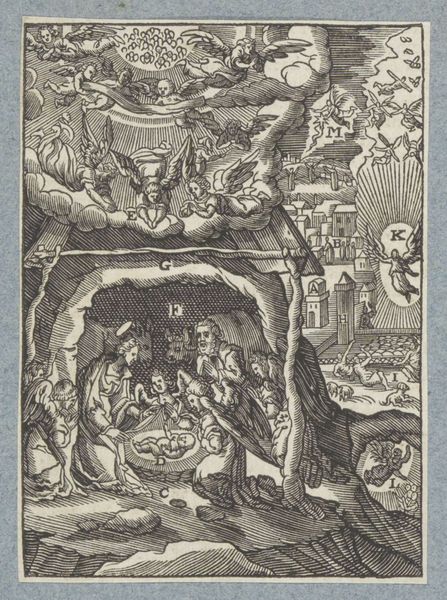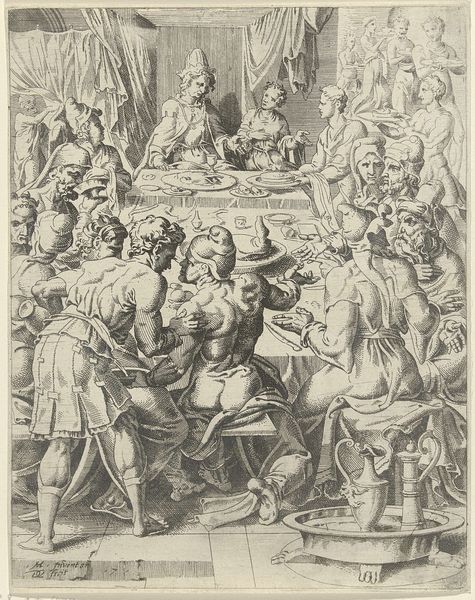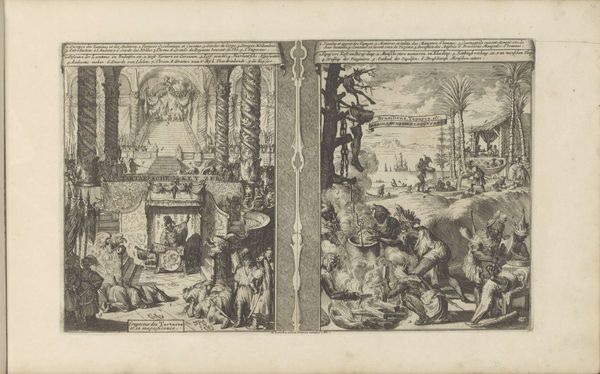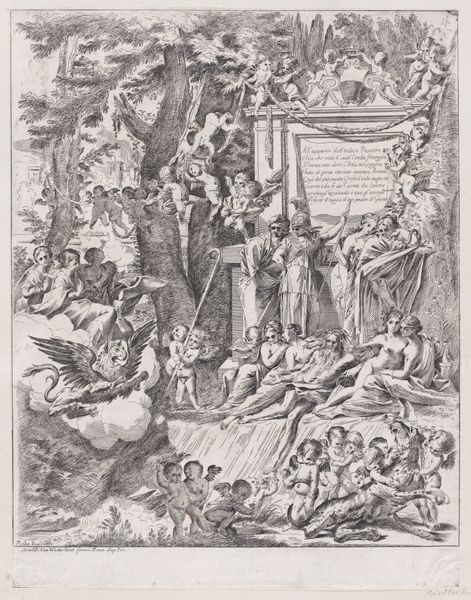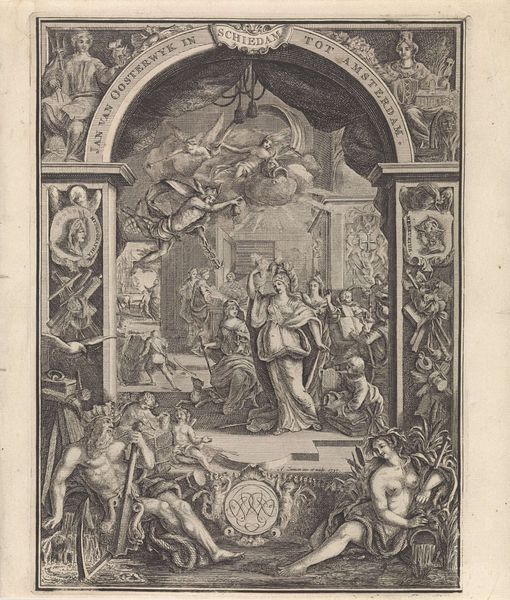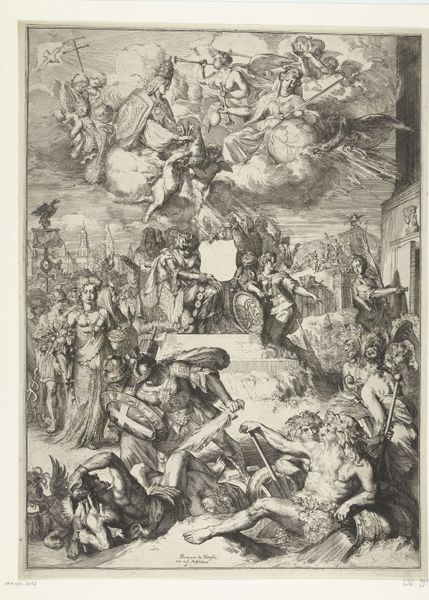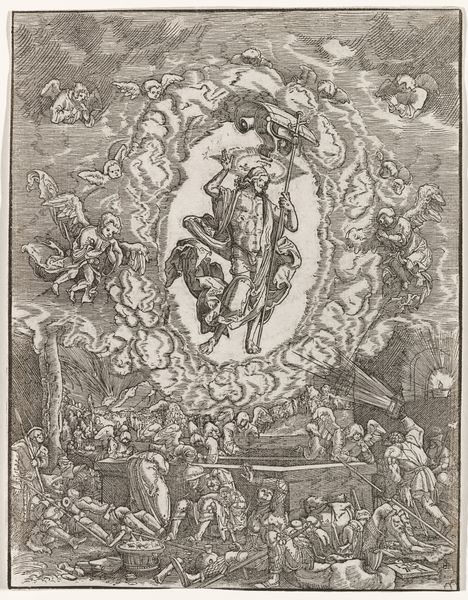
drawing, print, ink
#
drawing
#
baroque
# print
#
landscape
#
ink
#
history-painting
#
building
Dimensions: 7-3/4 x 5-3/4 in. (19.7 x 14.6 cm)
Copyright: Public Domain
Editor: This is Antonio Gandini’s “Alexander in His Tent (?)”, created sometime between 1602 and 1630. It’s a brown ink drawing and print. There’s so much happening; it feels both chaotic and very precisely rendered. I’m particularly struck by how Gandini layers scenes. What do you make of the composition and its possible meanings? Curator: Gandini creates what seems like an intentional juxtaposition between Alexander's earthly command in his tent, rendered with detailed immediacy, and an idealized, almost heavenly gathering taking place above, closer to the celestial architecture. Notice how the artist invites us to see Alexander's power as ordained by a higher, divine order, even as it acknowledges earthly strategies. Editor: That's interesting, the figures by what looks like a fountain or pool above Alexander’s tent, feel more like actors on a stage than figures giving orders. The earthly part looks more solid than the celestial. Curator: Indeed. The architectural elements, and particularly the figures interacting around the basin or fountain, borrow from established visual lexicons for justice and rulership going back to classical antiquity. They evoke collective memory and the legitimacy derived from cultural heritage. Gandini seems to pose: What kind of symbolic performance must Alexander enact to warrant the heavenly spectacle above? Editor: So it’s as though Gandini wants us to reflect on how leadership gets its authority not only from strength but also by referring to an earlier idea of justice. Does this imply a critique or commentary about power, then? Curator: It is open to interpretation, but there’s no denying Gandini encourages a critical look. Perhaps he recognized the cultural memory, embedded within familiar iconographies, held a potent capacity to question, or even subvert, those in positions of command. He's saying that image-making isn’t simply decorative. Editor: That makes me consider all the details anew! I thought of it as mostly just a history painting, but now I see that it is not just an illustration but also a meditation on power itself!
Comments
No comments
Be the first to comment and join the conversation on the ultimate creative platform.
